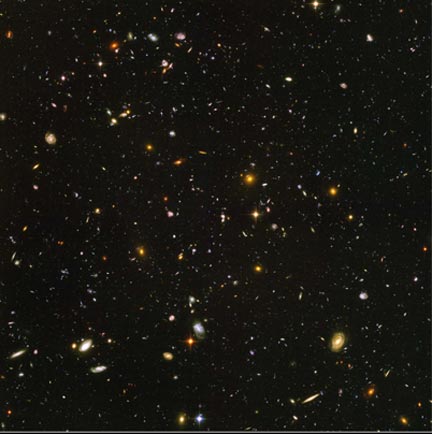 |
|
 |
This is a photograph of a small portion of the sky, only 1/3 the diameter of the full Moon. It’s how much sky is covered up by a dime at a distance of 20 feet (try it.) It was taken by the Hubble Space Telescope between September 24, 2003, and January 16, 2004. To the unaided eye it appears as an empty, insignificant patch of space. But the telescope’s camera collected light for a million seconds or about 11 days. What it recorded were 10,000 objects so far away that their faint light could only be seen through long exposure photography. Each of these objects is a galaxy—with on average enough stars to give 50 to every person on Earth. Light from the farthest galaxies in this picture started out when the universe was only 500 million years old, and is now only reaching us some 10 billion years later. In cosmic terms, this is a picture of the universe not too long after creation. Continue the Journey: Read more about this image—the Hubble Ultra Deep Field—and see some of the galaxies up close here. |